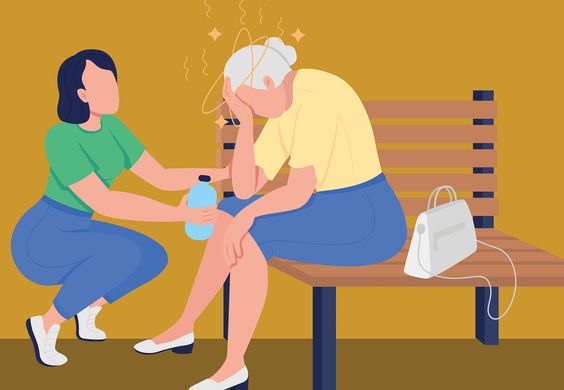Introduction
As temperatures soar during the summer months, it's crucial to prioritize your health and well-being, particularly when it comes to heat-related illnesses. Heat stroke, a severe and potentially life-threatening condition, occurs when the body's temperature regulation system becomes overwhelmed, leading to dangerously high body temperature.

Understanding the causes, symptoms, and preventative measures associated with heat stroke is paramount in safeguarding yourself and your loved ones from this serious condition. This article will delve into essential tips and strategies for preventing heat stroke, empowering you to enjoy the summer heat while staying safe and healthy.
Recognizing the Signs of Heat Stroke
Early recognition of heat stroke symptoms is vital for prompt medical intervention and better outcomes. Be vigilant for the following warning signs:
- High body temperature: A core body temperature of 104°F (40°C) or higher is a hallmark sign of heat stroke.
- Altered mental state: Confusion, disorientation, slurred speech, irritability, and seizures can occur.
- Skin changes: Hot, red, dry, or damp skin may indicate heat stroke.
- Headache: Severe, throbbing headaches are common.
- Nausea and vomiting: These symptoms may occur as the body overheats.
- Rapid breathing and heart rate: The body tries to cool itself down by increasing circulation.
Preventing Heat Stroke: Essential Tips
Taking proactive steps to prevent heat stroke is crucial, especially during hot and humid weather. Here are some essential tips to stay safe:
- Stay hydrated: Drink plenty of fluids, especially water and electrolyte-rich beverages, throughout the day. Avoid sugary drinks and alcohol.
- Wear appropriate clothing: Opt for loose-fitting, light-colored clothing made from breathable fabrics like cotton or linen.
- Limit outdoor activities during peak heat: Schedule strenuous activities for cooler parts of the day, such as early morning or late evening.
- Take frequent breaks in cool environments: Seek shade or air-conditioned spaces regularly, especially if you're engaging in physical activity.
- Never leave children or pets unattended in vehicles: Even for short periods, the temperature inside a parked car can rise rapidly to dangerous levels.
- Listen to your body: Pay attention to any signs of heat exhaustion, such as dizziness, fatigue, or muscle cramps. If you experience any of these symptoms, stop your activity, move to a cool place, and rehydrate.
Seeking Medical Attention
If you suspect someone is experiencing heat stroke, seek immediate medical attention by calling 911 or your local emergency number. While waiting for medical professionals, take the following steps:
- Move the person to a cool, shaded area.
- Remove any unnecessary clothing.
- Cool the person down by any means possible: This may include fanning them, sponging them with cool water, or applying ice packs to their armpits, groin, and neck.
Conclusion
Preventing heat stroke is crucial for enjoying the summer months safely. By understanding the risks, recognizing the symptoms, and following the preventive measures outlined in this article, you can significantly reduce your risk of developing this potentially life-threatening condition. Remember, staying cool and hydrated are paramount in beating the heat.





